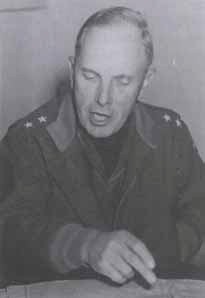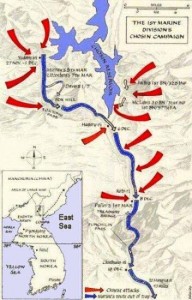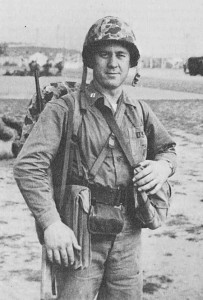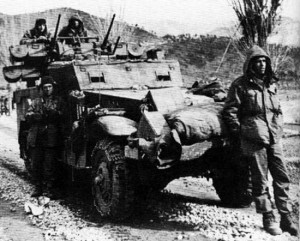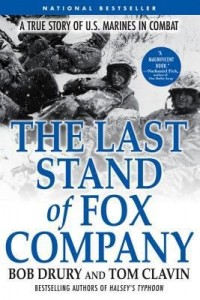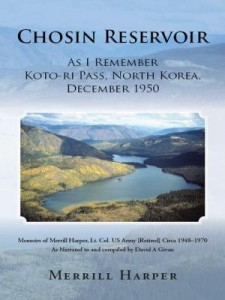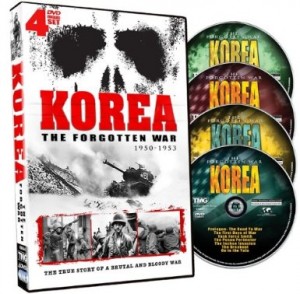 MacLean (L) and Faith
MacLean (L) and Faith “…Because Washington permitted soldiers to make and to act on decisions that were beyond the purview of the military, because it forced them to bring purely military thinking into matters that remained in essence political…in short because Washington still sometimes acted as if there could be a separation between war and politics, the United States, intoxicated with the heady taste of triumph, was heading for disaster…”
-T.R. Fehrenbach- THIS KIND OF WAR
– – – – – – – – – – – – – – – – – – – – – – – – – – – – – – – – – – – – –
Part I, Part II, Part IV of BOTH SIDES OF THE CHOSIN series.
General Douglas MacArthur was “going for broke…” He was afraid that the President or someone in the Pentagon or State Department would decide to pull him up short. And the weather was closing in on the plateaus and mountains of North Korea.
The plateau region running to the Yalu was at the same latitude as southern Italy… but the high country had none of the moderating influences that the coastal areas experienced. Bitter weather coming down out of Siberia combined with abysmal supply routes threatened to ruin his triumph.
His forces could not stay where they were, and if he pulled back for the winter he would have to go back as far as Pyongyang. The Chinese and North Koreans would probably occupy the vacated area and the administration and the UN would never let him move north again. So he ordered a mad dash “pursuit” to the Yalu.
Ned Almond had ordered the 5th Marine Regiment to go west of the Reservoir and join the 7th and 11th. He needed somebody in there… not so much to protect the flank of the 1st Marine Division, but to advance north to the Yalu moving up that line. On November 21st the 17th Infantry Regiment made it to the Yalu… Almond wanted the whole X Corps line there.
Task Force MacLean was not subordinated to Smith at 1st MarDiv HQ. Almond saw no need; it would soon be charging out of the AO of the Marines. Smith had no compelling reason to want it to be subordinated to him.
Almond contacted the 7th Division commander, Major General David G. Barr and directed him to provide a Regimental Combat Team (RCT) to head up the east side of the Reservoir. Barr couldn’t do that… not all at once and not from one regiment. All other previous problems aside, this was the first setback for what would eventually become Task Force Faith.
But now it was Task Force MacLean, named after its commander, Colonel Allan MacLean, West Point, class of 1930. During WW2 he had attended the British Staff College and was a respected staff officer. A hard working and brave officer, he had no combat command experience prior to Korea.
The 7th Division was spread out all over hell and gone heading for the Yalu. General Barr tapped the units that could get to the Reservoir the fastest. The 1st Battalion 31st Infantry (Faith) and the 1st Battalion 32nd Infantry (from Mac Lean’s regiment) were moved towards the Reservoir. The 2nd Battalion 31st Infantry was assigned to the force, but never made it farther than Koto-ri.
The howitzer and AA units made it, but assigned armor and engineers did not arrive before the RCT was cut off. Tenth Corps was feeding in different units from different commands…and doing it piecemeal. After all, they were going to be used in “pursuit”, not in battle.
The bad news didn’t stop coming. Seems that there was not a full issue of winter gear for the troops. They had 600 KATUSA attached to them…most of whom were only useful as labor troops… when there was no enemy nearby. Tire chains for trucks and jeeps lacking…something that would come to haunt the unit later.
Worst of all, the RCT’s ability to communicate would be, in effect, through a “soda straw…” Except for one instance involving freakish atmospherics, the unit could not communicate with the 7th Division HQ or the Marines at Hagaru-ri or anybody else on the planet. They had some Air Force people (who early on became casualties) who were to have communicated with air supply and CAS units. By the time that the RCT was engaged in heavy combat, they had one Marine Captain who could reach arriving air units… who could, if requested, relay info to Hagaru-ri.
Ultimately 1/32 moved up the east shore of the Reservoir and relieved the 5th Marine Regiment, who then obeyed the order to join the 7th and 11th at Yudam-ni. The Marines had dug some good defensive positions, so the battalion occupied them without having to break ground…which was getting far harder as the temperature plummeted.
As for 1/31 and supporting units, it went up the Reservoir where it would be conveniently located to join 1/32 when they advanced towards the Yalu. They dug some fighting positions but not for an all-round defense. Apparently nobody told them that more than 200,000 Chinese were already in the country and swarming to hit U.N. forces from all sides.
“Every good general fights with one eye on the back door…” -Duke of Wellington-
The deployment of the Task Force was piecemeal and suited only for a hell-bent for leather pursuit. Tenth Corps was placing Task Force MacLean into the path of a Chinese juggernaut.
While the soldiers arriving East of the Reservoir were very much in the dark, one piece of information would have changed everything. Had their commander been made aware by 10th Corps of at least a possibility of the Chinese trying to cut off his unit, he very likely would have deployed his forces differently.
The Marines at Yudam-ni had a massive ambush route behind them if they had to retreat, but at least had stationed a rifle company at the Toktong Pass, potentially the most deadly choke-point between Yudam-ni and Hagaru. It would prove their salvation.
It should be pointed out that Marine rifle platoons and companies were one third larger than Army units of the same designation. In theory Marines would make quick amphibious assaults with little or no chance for replacements, whereas the Army planned for extended warfare over a large area with a constant flow of replacements. This situation carried over into the Vietnam conflict…)
Aside from a 360 defense perimeter at night for all arriving units, he would probably have left at least a platoon, if not a company at hill 1221 and also at Hudong-ni. These were the most probable choke-points to cut off his command.
But the orders that he received were vigorous instructions to prepare to advance north. The 7th Division’s 17th Regiment already sitting on the Yalu, the pressure was on from both Almond and MacArthur to wrap everything up within a week or so at most.
By November 27th the RCT was situated along a ten mile stretch hugging the east side of the reservoir. In addition to the two infantry battalions, two batteries of the 57th Field Artillery Battalion, one platoon of Battery D, 15th Antiaircraft Battalion were also present.
MacLean had no idea where the additional infantry battalion might be… or the tank unit assigned to his command. Regardless, he had orders to attack north the following day.
That night the Chinese hit the RCT with great force… though without careful recon or planning. The soldiers were caught off guard but killed or drove off all the attackers. A Company, 31st Infantry lost its commanding officer. The RCT’s Marine Air Liaison officer, Captain Edward P. Stamford was present with A Company and assumed command until after the action when the Battalion could designate a new commander.
The attack disrupted plans of an immediate attack, but did not result in cancellation of the plan. At noon, General Almond flew into the perimeter by chopper. With him was his aide, future Secretary of State (and White House Chief of Staff to Richard Nixon and Gerald Ford) 1st Lt. Alexander Haig. MacLean was out on the line so Lt. Colonel Faith had the honor of the visit.
Almond essentially dismissed the attack of the night before… in spite of significant casualties that had been inflicted on the unit… and the heavy fighting.
“The enemy who is delaying you for the moment is nothing more than remnants of Chinese divisions fleeing north… We’re still attacking and we’re going all the way to the Yalu. Don’t let a bunch of Chinese laundrymen stop you…”
Almond often annoyed subordinate commanders by handing out medals on the spot. The lack of enough suitable recipients was not allowed to interfere. He announced that three Silver Stars would be awarded on the spot… and they were. Handed one to Faith, told him to select two more recipients. Faith took two seconds and selected a lightly wounded officer and a cook who was wandering by.
Almond and his aide then climbed back in the chopper and flew to Hagaru-Ri. Nobody knew it, but “…the ship had already struck the iceberg and nothing could keep it from sinking…” (When Almond left, Faith threw his medal into the snow.)
At Hagaru the 7th Division XO Brigadier General Hank Hodes… a good officer…had set up a sort of liaison post with the 1st Marine Division HQ. He was often visited by the Division C.O., Major General Barr… another well qualified commander. Even though many Chinese troops were spotted heading south, Almond was pushing for the move to the Yalu.
MacLean was expecting the rest of his units to arrive at any moment. A medical company had tried to link up, foolishly driving at night without infantry or armor support and was destroyed. Their loss would be felt keenly as the casualty load in the RCT was already heavy. It also became apparent that the unit’s recon platoon (which had been deployed prior to the Chinese attack) had been wiped out in the snow and mists.
By the time that Almond was giving his “laundrymen” speech, the RCT was already surrounded by the Chinese. MacLean’s 31st tank company tried to reach the unit, but was stopped by a Chinese roadblock and lost four tanks. There was no proper infantry support… A makeshift infantry force was slapped together the next day from H&S troops of the 31st Infantry and the 57th Field Artillery.
The surviving tanks had to fall back to a small deserted village… Hudong-ni, about four miles from the south perimeter of Task Force MacLean. The Marines were in extreme danger of losing Hagaru and could spare nothing from their thin perimeter to aid the tank company.
Meanwhile, the 2nd Battalion of the 31st Infantry was nowhere near the action. Their commanding officer had his battalion near the coast and was dragging his heels in spite of orders from both Division and Corps to join MacLean ASAP.
Almond may have been hostile to Oliver Smith’s reluctance to “deploy his Marines into the hostile mists…”, but he became nearly apoplectic when he discovered that one of his battalion commanders had not even undertaken the (relatively) easy and safe approaches to the Reservoir.
Almond was at Hagaru. He grabbed a Major on his staff and ordered him to chopper down to the location of 2/31 and light a fire under the battalion commander… and be none too gentle about it. Almond ordered the Major to accompany the battalion. But even with Almond’s righteous wrath being directed his way… the C.O. of 2/31 couldn’t seem to get his command off the dime for quite some time.
Briefly, the battalion moved up the road towards the First Marine Regiment (minus one battalion at Hagaru) at Koto-ri. There was some fighting along the way, but relatively minor compared to what all of the forces north of them were going to experience.
At one point an unmanned roadblock was detonated as they approached it. The battalion commander just stood and did nothing while some of his men… then others… started to abandon their vehicles and flee. The officers and NCO’s did nothing to rally the men.
The Major that Almond had sent down was appalled. He started shouting orders and was able to rally most of the command… (some others arrived on foot at Koto-ri… red-faced to learn that their battalion was relatively intact.)
Usually when troops start to break it is difficult for their officers and NCO’s to get them in hand. An unknown officer shouting orders most likely to be ignored. The fact that most of the command rallied and followed his orders would seem to indicate that the root of the problem was not the troops… but their commander. (Who neither protested nor assisted when the Major effectively took command…)
The First Marine Regiment was commanded by Lewis B.(“Chesty”)Puller. His two battalions were holding their own against the Chinese at Koto-ri. Puller was aghast when he learned of the near route of 2/31 after it arrived and Almond’s Major briefed him. It was clear that it was too late to move up to MacLean’s position…so the battalion was assigned to Puller.
Before the word could get out, Almond flew into Koto-ri and presented Puller and the C.O. of 2/31 with the Distinguished Service Cross. (The Major got a Silver Star…) Couple of days later Almond had the full story… he might have learned a lesson about knee-jerk awards from the hip. The C.O. of 2/31 was quietly relieved and removed from the area. Puller found the replacement C.O. both competent and eager to sort out the battalion.
Under its new commander the battalion would serve honorably and one of its companies heroically. But damage had been done… not just to the reputation of the battalion, but (quite unfairly) to Task Force MacLean/Faith. Though never under orders of those commanders… the battalion’s initial orders to report to them caused the battalion to be “bundled in” with the Task Force in the minds of many who had little idea of the separate identity of the units and the accomplishments of the RCT.
On the east side of the Reservoir the task force, unaware of its situation, tried to get organized. For the moment food and ammunition were “sufficient” though medical supplies were starting to run short.
The ever increasing cold was having an effect. Vehicle batteries wanted to die. Trucks had to be run for fifteen minutes every hour. Wounded would freeze to death if not quickly collected. Carbines froze up and became useless. Before it was over the temperature would drop as low as -30 F.
Oddly, the lack of full winter gear issue had one good effect. The unit got very few of the “shoe-pacs” that other units in Korea had been issued. They had to make do with rubber overshoes that were worn over their combat boots. The improvised issue proved vastly superior to the faulty shoe-pacs and frostbite cases involving feet were far less than among the Marines and others unfortunate enough to have been issued the regulation cold weather footwear.
The most serious shortcoming was the RCT’s almost total isolation from the rest of the world. Part of the problem was that Army doctrine at the time directed that correcting such a situation was the responsibility of higher levels of command…and they weren’t addressing it.
The RCT’s Marine FAC could contact approaching CAS and air resupply assets, which was literally life or death. He could send information to the air units which they could relay to ground control at Hagaru. The RCT essentially made no use of this to either request dropping of communication teams with different equipment… or for reporting the ongoing situation.
The Marine FAC, Captain Stamford was a Marine aviator who had flown various aircraft in WW2. After the war he attended ground officer training not only with the Marines, but with the Army at Fort Lewis. He was both a massive aid to the command… and a major worry. The problem was that there was only one of him to go around.
The commanders were caught between two fires. To maximize results Stamford needed to be as close to the action as possible… but if he became a casualty the effectiveness of air support would be massively reduced.
Even with a good FAC there were problems. The Air Force, Navy, and Marines were dropping supplies. But even with clear weather, winds were strong and variable. Any supplies that landed out of site were grabbed by the Chinese.
Worse, heroic efforts by the pilots sometimes wasted because too often their loads were of no use to the troops. Lot of crated up gear in warehouses…some not marked…some mislabeled. Athletic equipment hardly appreciated… ammo for weapons the troops did not have. Some needed supplies that had been poorly stored and were coated with rust or otherwise rendered useless.
At Koto-ri Puller’s men approached him with the news that one of the pallets contained many thousands of prophylactics. Puller fumed, “What the hell do they think that we’re doing to these Chinese…?”
At Task Force MacLean there was no humor. Among all the many items dropped… welcome or otherwise, three types of supplies were not present. Medical supplies… increasingly needed as the number of casualties rose. Also .50 caliber and 40mm ammunition.
The anti-aircraft unit attached to the RCT was equipped with vehicles carrying quad 50s and twin 40mm weapons. More than anything else except CAS when available… these two weapons systems massacred the Chinese and kept them at bay. But the weapons went through ammo at a prodigious rate and none was being dropped to the command.
Small arms ammunition was starting to run a bit low. Some was included in the drops, but not enough. Worse, some sub-units would collect it when and if it fell but not divide it among the entire command.
On the night of November 28 the Chinese struck hard, inflicting many casualties and overrunning some positions. North Korean tanks and self-propelled guns remarkably took part (the Chinese had vast numbers of infantry, but had sacrificed heavy weapons for speed of movement and mortars were their most common support weapons.)
Meanwhile all hell was breaking loose in the 10th Corps AO. The Marines at Yudam-ni obeyed the order to head west and vanish. But somebody in the Chinese forces did not get the word… The Chinese units, instead of letting the Marines walk some miles into the trap…bitterly resisted and in so doing prevented a massacre.
Ned Almond was flown to an emergency meeting at MacArthur’s HQ in Japan. Everything had changed…at last it sank in and MacArthur saw the light at the end of the tunnel… and it was attached to a runaway freight train.
Almond tried to imply that with a couple of “shifts” that MacArthur could turn the situation around and chase the Chinese across the Yalu. MacArthur paid no attention… he was thinking about a communication that he was going to send to Washington stating that unless he got “unlimited” authority (up to and including bombing China…with nukes if need be) that they should be prepared to evacuate all American forces from Korea.
As things kept getting worse with the RCT on the east side of the reservoir, Marine HQ at Hagaru was in no position to help…even had they known what was going on. To defend the commanding heights at Hagaru would have involved a four mile line with at least two infantry regiments. No such force was at hand
Instead, (praying that the Chinese had no significant artillery) a partial defense was set up on flat ground closer to Hagaru. Those who in later years claim that Smith could have sent help to MacLean ignore the fact that at that time the RCT had a force several times Smith’s… and Smith was being hit by as many Chinese.
And the one harsh fact at the Reservoir was that everything would be won or lost at Hagaru. If it fell the 5th,7th,and 11th Marine regiments would be destroyed as would the units at Hagaru. Any survivors from east of the reservoir would have nowhere to go. At best Puller’s 1st Marine Regiment and the attached Army battalion might fight its way out.
While Smith held Hagaru supplies could be flown in…rather than dropped all over hell and gone. Wounded could be flown out. As Task Force MacLean was learning, ever increasing masses of wounded bad for morale and crippling to tactical options. In addition, healthy Marine replacements would be coming in on many of the flights.
Hagaru-ri had to be held at all costs. Puller had just agreed with Smith to pay part of that cost. The Chinese were hitting everywhere, but if they focused a bit more on Hagaru it would be lost. Puller had to send forces through what would be called “Hellfire Alley” with the certainty of taking heavy losses.
Puller slapped together what would be called Task Force Drysdale, consisting of a Marine rifle company, some Marine service troops, one company of soldiers from the recently arrived 2/31, a force of Marine tanks, and a small raiding battalion of British Royal Marines headed by Royal Marine Lt. Colonel Douglas B. Drysdale (41 Independent Commando, Royal Marines…)
Drysdale had no illusions…the Chinese held the whole length of Hellfire Alley. Regardless of casualties he had to get whatever reinforcement he could to Hagaru. The nightmare lived up to his expectations.
The good news was that the tanks and 1/3rd of the infantry got through to Hagaru. One third made it back to Koto-ri…and the remaining third was destroyed or captured, including many of the soldiers in the rifle company from 1/31 who performed well in hideous circumstances.
Even with the badly needed reinforcements, it wasn’t enough. In a massive night attack the Chinese climbed over their dead and broke through at Hagaru. All that was needed was to direct the troops who penetrated towards the flanks and rear of the Marine defenses and by morning the base would be firmly in the hands of the Chinese.
Bravery of the highest order and discipline had enabled the Chinese to break through. But at the pivotal moment discipline failed. The Chinese had suffered badly in the cold (many wearing footwear that amounted to tennis shoes) and were hungry. They broke ranks and started looting.
The Marines couldn’t handle an organized enemy formation inside their perimeter… but a mob of looters was something else. It was quickly mopped up and the gap in the defense perimeter plugged.
East of Chosin casualties had been heavy in the night attack and a few men had frozen to death in their foxholes. MacLean decided to pull back the lead battalion and consolidate it with the other units some miles to the south. The Chinese tried to stop him.
Large numbers of Marine and Navy aircraft made the Chinese suffer. In trying to close in on the retiring battalion they provided superb targets. At the same time Air Force Combat Cargo Command was dropping supplies to the Task Force.
For a brief period the morale of the task force must have soared as the sky filled with cargo planes, parachutes, and Corsair fighter bombers screaming in at low level. The RCT’s FAC, Captain Stamford, was the sole director of this “flying circus…” From morning til last full light the Chinese were massacred.
Both MacLean and Faith were pushing themselves too hard…trying to do everything at once. MacLean saw reinforcements approaching his men, but some of his troops were firing at them. Instead of sending an officer to deal with the problem, MacLean himself ran out to stop the firing.
As he approached the arriving troops he discovered that they were Chinese…his infantry reinforcements were miles away with Puller at Koto-ri. MacLean was shot several times by the Chinese who took him prisoner…he died some days later.
Lt. Colonel Don Faith of 1/32 suddenly inherited the whole lash-up. It was SOP for Faith to take command pending either confirmation or designation of a new commander from higher up. Neither happened. Seventh Division HQ just went with it.
Task Force Faith, as it came to be called (it was never an official designation) was hurting and was not on very good ground…but at least it was consolidated.
General Barr, Faith’s division commander visited Smith on November 30th and both agreed that the Marines at Yudam-ni were in no position to aid the soldiers on the east side of the reservoir. They would be doing good to make it back to Hagaru…whose survival was paramount.
Barr choppered to meet with Faith. The meeting was fairly brief. No record exists of what took place. At least the division commander got caught up on just what a “bad smell” situation the RCT was in. Barr left and about that time four wounded (out of hundreds suffered) were evacuated by chopper… the only ones ever flown out.
At this point a major “what if” question arises. General Barr was heading back to Hagaru. He might well have had the Division XO, General Hank Hodes fly across the reservoir and take command of the RCT.
This would have been no reflection on the abilities of Faith… who was new to combat command of troops… had been run ragged and was more than a little short on sleep. A good officer, Hodes (and his star) might well have raised morale in the beleaguered force. Faith would have had been out from under the crushing burden of command and might well have been better rested and thinking much clearer when the final crisis arrived.
For whatever reason it never happened. It was up to Don Faith, and he was going to try to get his command out of this trap.
-Yankee Papa-
SUGGESTED READING (corrected from initial post)

